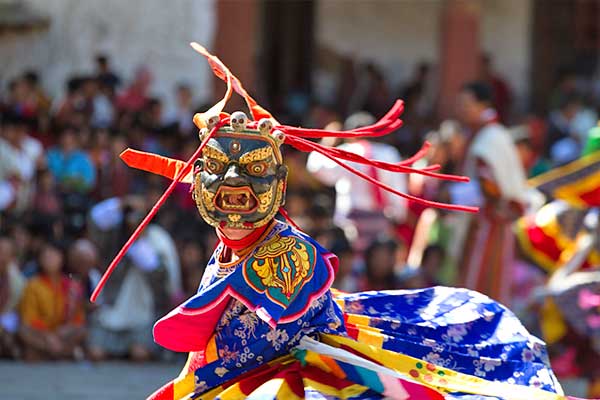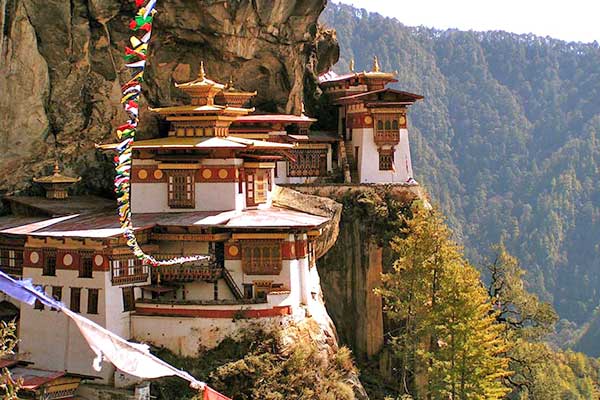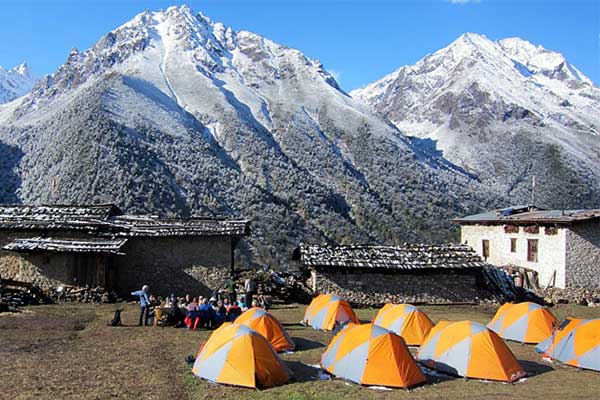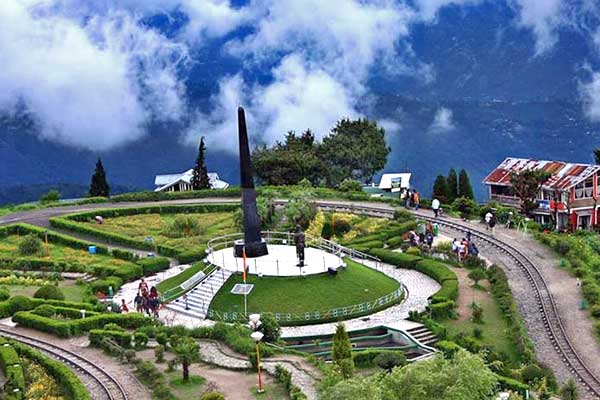Overview
Duration :
12 Days
Secondary Activity:
Hiking
Max altitude :
Transportation:
International and Domestic Flight, Private Vehicle
Trip ends in:
Kathmandu
Accomodation:
Hotel
Primary activity:
Culture and Sightseeing
Group Size:
Min. 1 pax
Country:
Bhutan
Trip starts from:
Kathmandu
Diffficulty:
Moderate
Meals:
Nepali, Continental and Bhutanese
Best Season:
All Seasons
Trip route:
Kathmandu -Paro - Thimphu - Punakha - Gangtey -Thimphu - Paro
Trip introduction
Our Bhutan Culture Tour gives you an indefinite approach to witness the legacy and conventions of Bhutan’s immortal culture that still flourishes today. Bhutan as a nation has been able to retain all the charm of the old world. This visit is uniquely custom-made to give a more profound knowledge into the lives of the different individuals of Bhutan.
Situated in the western valleys, you will be drenched in the day-by-day lives of Bhutanese, with select touring activities. Such as farmhouse visits, interactions with northern migrant tribes in support of some extraordinary Buddhist enclosures. It additionally incorporates visits to Bhutan’s numerous social highlights including Ta Dzong Museum, Rimpong Dzong with its wooden cantilevered bridge.
Explore the notorious Tiger’s Nest/Taktsang Monastery hanging onto a precarious almost vertical mountain cliff. And is one of the holiest sites in the Buddhist arena in the Paro Valley. Witness spectacular sight in terms of location, setting, and history as you take a stroll around the twelfth-century Changangkha Temple. And the National Library shows antiquated sacred texts in Bhutan’s capital Thimphu. Along with Punakha Dzong and Chimi Lhakang in the sub-tropical Punakha Valley.
Contact Nepal Mountain Trekkers and join our 13 days Bhutan Culture Tour to experience out-of-the-world sceneries with a visit to the western regions of Thimphu, Paro, and Punakha. As well as, you can personalize the tour as per your specification and requirement with us.
Special Note:
If this itinerary doesn’t suit your requirement or if you want to customize it, please feel free to contact us. This trek could be customized as per your required time frame and budget limits.
Overview
-
Day 1Arrive at Kathmandu
-
Day 2Sightseeing in Kathmandu and Tour Preparation
-
Day 3Fly Kathmandu to Paro and Drive to Thimpu
-
Day 4Sightseeing in Thimphu
-
Day 5Drive to Punakha
-
Day 6Sightseeing in Punakha
-
Day 7Drive to Gangtey
-
Day 8Sightseeing in Gangtey and Drive back to Punakha:
-
Day 9Drive to Thimphu
-
Day 10Sightseeing in Thimphu
-
Day 11Drive to Paro and Sightseeing
-
Day 12Depart from Paro Airport
Detail Itinerary
Day 1 : Arrive at Kathmandu:
As soon as you arrive at the capital city, Kathmandu, you will be met by a representative from Nepal Mountain Trekkers at International Airport terminals and he will take you to your respective hotel (Hotel Green Horizon). After check-in at the hotel, you can enjoy your free time relaxing in a cozy room or stroll around the tourist hub Thamel area until the end of the day.
Day 2 : Sightseeing in Kathmandu and Tour Preparation:
After having our early meal, we start our day with a visit to the Nepal Mountain Trekkers office at Thamel. After being introduced to our team including tour guide, trekking leader, and director of operations, we head for necessary trekking preparations, getting needed equipment with the initiation of Kathmandu sightseeing around world heritage sites. Kathmandu durbar square, Swayambhunath stupa, Pashupatinath temple, and Boudhanath stupa are UNESCO world heritage sites that we explore till sunset. Overnight stay at the hotel in Kathmandu. B included.
Day 3 : Fly Kathmandu to Paro and Drive to Thimpu:
As your flight lands in Paro. You will meet our representative at the airport and will be driven to Thimphu, Check in the hotel and have lunch. After lunch visits the Junshi paper factory. Handmade paper-making begins to find its place as the most important part of Bhutanese culture and tradition. Paper making first began as a domestic occupation and is still preserved to till these days. In the year 1990 the Government, Ministry of Trade and Industry established the Jungshi Handmade Paper Factory to act as a key pilot to safeguard the old tradition of handmade paper making in Bhutan and expand its market for commercial purposes. In 1992 the factory was privatized under the sole proprietorship of Mr. Norbu Tenzin, who was trained and sent as a missionary in Shimane Prefecture, Japan for the high quality and designing of Bhutanese traditional handmade paper for the international market. After the paper, the factory drives up to the Kuenselphodrang to see the 165 ft tall bronze Buddha statue which overlooks the capital city of Bhutan, and later visit the Tashicheo Dzong. Overnight in Thimphu.
Day 4 : Sightseeing in Thimphu:
Today after breakfast, we shall be exploring the places of interest in Thimpu. The sightseeing places include King’s Memorial Chorten (Stupa) which was built in memory of our Third King of Bhutan, then we will visit Buddha Point where we can find a statue of Buddha which is 169 feet tall, and then we will explore Changangkhalhakhang which was built in the 12th century is one of the oldest temples. Continuing our sightseeing, we visit National Handicrafts Shop/Weekend Market and in the evening at leisure time, we can take a walk to the main city from Clock tower square for souvenir shopping. Stay Overnight at Thimpu.
Day 5 : Drive to Punakha:
Today you will do Thimphu sightseeing till lunch.Memorial Chorten where the older people continuously circumambulated, murmuring mantras and spinning their prayer wheels. Construction of this landmark was the idea of Bhutan’s 3rd king, His Majesty Jigme Dorji Wangchuk (“the father of modern Bhutan”) who has wished to erect monument to world peace and prosperity. Completed in 1974 after his untimely death, it serves both as a memorial to the Late King and as a monument to peace. Zorig Chusum (commonly known as the Painting School) where students undergo a 6-year training course in Bhutan’s 13 traditional arts and crafts. Later visit Folk Heritage Museum, a fascinating testimony of the Bhutanese material culture and living traditions. Phelchey Toenkhyim (Folk Heritage Museum), is dedicated to connecting people to the Bhutanese rural past through exhibits, demonstrations, educational programmed and documentation of rural life. The principal exhibit in the museum is a restored three-story traditional building, rammed with mud and timber, which dates back to the mid-19th century. In order to present a typical Bhutanese rural setting flavor, paddy, wheat, and millet fields, a traditional watermill (with millstones that dates back more than 150 years), traditional style kitchen gardens with vegetables that were grown and consumed over 100 years, and the famous hot stone bath complement the museum building and exhibition within. Takin, the national animal of Bhutan is said to be created by Lam Drukpa Kinley. After lunch drive to Punakha. Drive to Punakha(driving hour 2.30hrs), the old capital of Bhutan. Drive over a pass (Dochu-la 3,150mtrs). La in Bhutanese means pass. There are 108 chorten called “Druk Wangyel Chorten” with colorful prayer flags surrounding the area, which makes you fresh and feel at peace. Visit the Druk Wangyel monastery. If the sky is clear this provides the best place to see and take photos of Himalayan snowcapped mountains ranges which borders Tibet(China), the following are the names of the peaks which can be seen from this pass (left to right): Masagang (7,158m), Tsendagang (6,960m), Terigang (7,060m), Jejegangphugang (7,158 m ), Kangphugang (7,170 m ), Zongphugang (7, 060 m ), a table mountain that dominates the isolated region of Lunana, finally Gangkar puensum, the highest peak in Bhutan at 7,497m.
After that, we drive down the hill till we feel the warm air of Punakha valley.
Overnight in Punakha.
Day 6 : Sightseeing in Punakha:
After breakfast, we will be having sightseeing at Punakha that we begin with a visit to Punakha Dzong (fortress), which retains the most expounded temple in Bhutan and is a must to see the fortress in Bhutan and a fine example of Bhutanese rich Art and Architecture. Continuing our program further, we can take a short hike above the Dzong with a short and steep ascent which offers a marvelous vista of the valley with local houses and the whistling river. You can also enjoy mountain biking there. If you avail more time then we can go for further uphill hiking to the Khamsum Yulev Lakhang Temple. Stay Overnight at Punakha.
Day 7 : Drive to Gangtey:
We will be enjoying a scenic drive to Gangtey valley which is also recognized as Probjikha and is one of the most beautiful destinations in Bhutan and also the winter home of endangered black-necked cranes that arrive every year from the Tibetan Plateau. You can visit the Gangtey Monastery located on a small hill that rises from the valley floor and is surrounded by a large village and is a 17th-century monastery. Stay Overnight at Gangtey.
Day 8 : Sightseeing in Gangtey and Drive back to Punakha::
After breakfast, we will be visiting some interesting and historic places of interest in Gangtey. Gangtey is the home of Black Necked Crane which roams from the dry grasslands of Tibet in the north. It is a gorgeous valley of Bhutan. You can also visit Gangtey Gompa. After exploring Gangtey we will drive back to Punakha and Stay Overnight at Punakha.
Day 9 : Drive to Thimphu:
We will have time in the morning to see Punakha Dzong (the second of Bhutan’s dzongs to be built) which for many years served as the seat of government. The dzong was first built in 1637 and is still one of the largest in Bhutan. We will drive to Thimphu in the morning (about 2 hours) and have the afternoon to visit Thimphu, the capital of Bhutan. We will visit the Trashi Chhoe Dzong, built as the symbol of the capital, and then explore the shops along with Norzin Lam, Thimphu’s main street.
Day 10 : Sightseeing in Thimphu:
Taktshang: After an early breakfast visit the Tiger’s Nest(Taktshang)Hike up to the famous cliff-hermitage called Taktsang, the “Tiger’s Nest.” This monastic retreat is built into a sheer cliff face, high above the Paro valley. The Buddhist saint Padmasambhava flew across the Himalayas on the back of a tiger and landed here, bringing Buddhism to Bhutan. The trail to the monastery climbs through a beautiful pine forest and an occasional grove of fluttering prayer flags. Taktsang was damaged severely by fire in 1998 and restored a new one which looks like the old one but more elegant looking. Have lunch at the Cafeteria when you walk back from the Taktshang.
Kyichu Lhakhang: This Lhakhang(monastery), built in the 7th century, is one of the two oldest and most sacred shrines in Bhutan (the other being Jambey Lhakhang in Bumthang). Kyichu Lhakhang is composed of twin temples. The first temple was built by the Tibetan king, Songtsen Gampo in the 7th century. In 1968, H.M. Ashi Kesang, the Queen Mother of Bhutan, arranged for a second temple to be built alongside the first one, in the same style. Rinpung Dzong: Built-in 1646 by Shabdrung Ngawang Namgyal, the “fortress of the heap of jewels“stands on a hill above Paro Township. The approach to the Dzong is through a traditional covered bridge (called the Nemi Zam) and then up a paved stone path running alongside the imposing outer walls. The valley’s annual springtime religious festival, the Paro Tsechu, takes place in the courtyard of the Dzong and on the dance ground on the hillside above.
Overnight in Paro
Day 11 : Drive to Paro and Sightseeing:
The morning is free to do some more sightseeing or shopping around Thimphu. In the afternoon we take a 2-hour drive through the lovely central foothills to Paro where we will overnight in a comfortable hotel.
Taktshang: After an early breakfast visit the Tiger’s Nest(Taktshang)Hike up to the famous cliff-hermitage called Taktsang, the “Tiger’s Nest.” This monastic retreat is built into a sheer cliff face, high above the Paro valley. The Buddhist saint Padmasambhava flew across the Himalayas on the back of a tiger and landed here, bringing Buddhism to Bhutan. The trail to the monastery climbs through a beautiful pine forest and an occasional grove of fluttering prayer flags. Taktsang was damaged severely by fire in 1998 and restored a new one which looks like the old one but more elegant looking. Have lunch at the Cafeteria when you walk back from the Taktshang.
Kyichu Lhakhang: This Lhakhang(monastery), built in the 7th century, is one of the two oldest and most sacred shrines in Bhutan (the other being Jambey Lhakhang in Bumthang). Kyichu Lhakhang is composed of twin temples. The first temple was built by the Tibetan king, Songtsen Gampo in the 7th century. In 1968, H.M. Ashi Kesang, the Queen Mother of Bhutan, arranged for a second temple to be built alongside the first one, in the same style. Rinpung Dzong: Built-in 1646 by Shabdrung Ngawang Namgyal, the “fortress of the heap of jewels“stands on a hill above Paro Township. The approach to the Dzong is through a traditional covered bridge (called the Nemi Zam) and then up a paved stone path running alongside the imposing outer walls. The valley’s annual springtime religious festival, the Paro Tsechu, takes place in the courtyard of the Dzong and on the dance ground on the hillside above.
Overnight in Paro
Day 12 : Depart from Paro Airport:
Waking up in Paro, we’ll have time for one last walk through town before saying our goodbyes and heading to the airport for the Druk Air flight out of Bhutan.
Price Includes
- Private transportation.
- All necessary travel permits
- English-speaking local guide.
- Accommodation on a single/twin room basis.
- Sightseeing and monastery entrance fees as per the itinerary
- Meal plan: Full Board Basis
Price Excludes
- Insurance of any kind.
- Additional cost due to natural calamity and unforeseen circumstance
- Personal expenses such as drink, guide tips &, etc.
Trip Gallery
Trip Map:
Equipments
 Equipment List
Equipment List
- Duffel Bag
- Day Pack (35-45 L)
- Down Jacket
- Trekking Boots
- Crocs (evenings & washing)
- Trekking Pants (2-3)
- T-Shirts (3)
- Long-sleeve Trekking Shirts (2-3)
- Trekking Jacket
- Gortex (or similar) Jacket & Pants
- Fleece or Thermal Top (evenings)
- Fleece or Thermal Bottoms (evenings)
- Lightweight Long Underwear (to sleep in or layer under clothes)
- Socks (5)
- Gloves (lighter & heavier for passes)
- Wool Hat
- Baseball Cap or Wide-brimmed Hat
- Camp Towel
- Trekking Poles (optional, recommended)
- Down Booties (optional, recommended)
- Sunglasses (2)
- Water Bottles | Nalgenes (2-3)
- Bladder (optional, recommended)
- Toiletries, Sunscreen with SPF, Lip Balm with SPF
- Watch (with alarm)
- Extra Batteries
- Battery Chargers
- Head Lamp (2)
- Water Purifying Tablets, Small Water Filter or Steripen
- Camp Washing Bowl (optional, collapsible for clothes)
- Hand Sanitizer
- Small Solar Panel (optional, recommended for iPods, iPhones, camera batteries, Kindles)
- Book(s)
- Zip-Lock | Plastic Bags
- Soft Toilet Paper | Tissues (we supply toilet paper but you will want something softer for blowing your nose)
- Baby-Wipes | Wet-Wipes (for personal cleaning)
- Handi-Wipes, J-Cloth, or Chux (optional: easy for a quick daytime clean, fast drying)
- Rehydration | Electrolytes
- Snacks!
- Personal Medical Supplies
- Snacks, chocolate bars, energy bars (Western brands), dried fruit & nuts
- Laundry Detergent
- Lemon Tang (for water if you want)
- Batteries
- Trekking Poles
- Micro Spikes
- Medical Supplies
- We strongly suggest bringing Western meds with you as there are a lot of Indian fakes on the market!
- Suggested: Diamox, Azithromycin, Ciprofloxacin, Tinidazole, or Flagyl & Augmentin. Bring COMPEED for covering blisters & good tasting electrolytes &/or rehydration salts (Emergen-C is a good American brand). The local versions aren’t very appealing.
- We also recommend bringing strong knee & ankle supports & braces, ACE bandages for sprains & strains, Tegaderm &/or other would coverings. Duct tape is always useful. We’re happy to take excess medical supplies off your hands when you leave if you won’t need them and pass them on to others. We use lots of the large amount we have with us to treat locals we meet when trekking.
Related Trips
You will also like …







